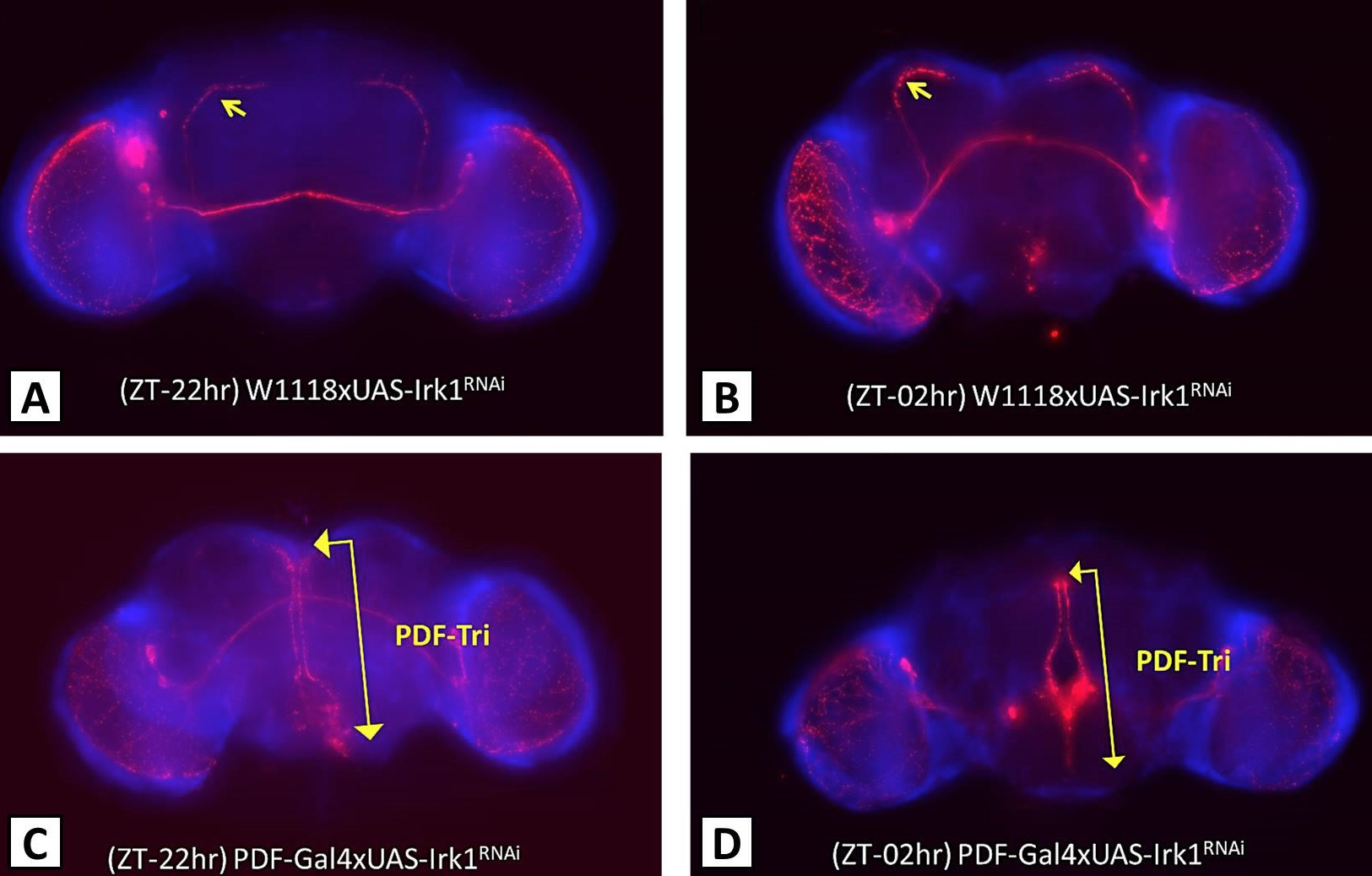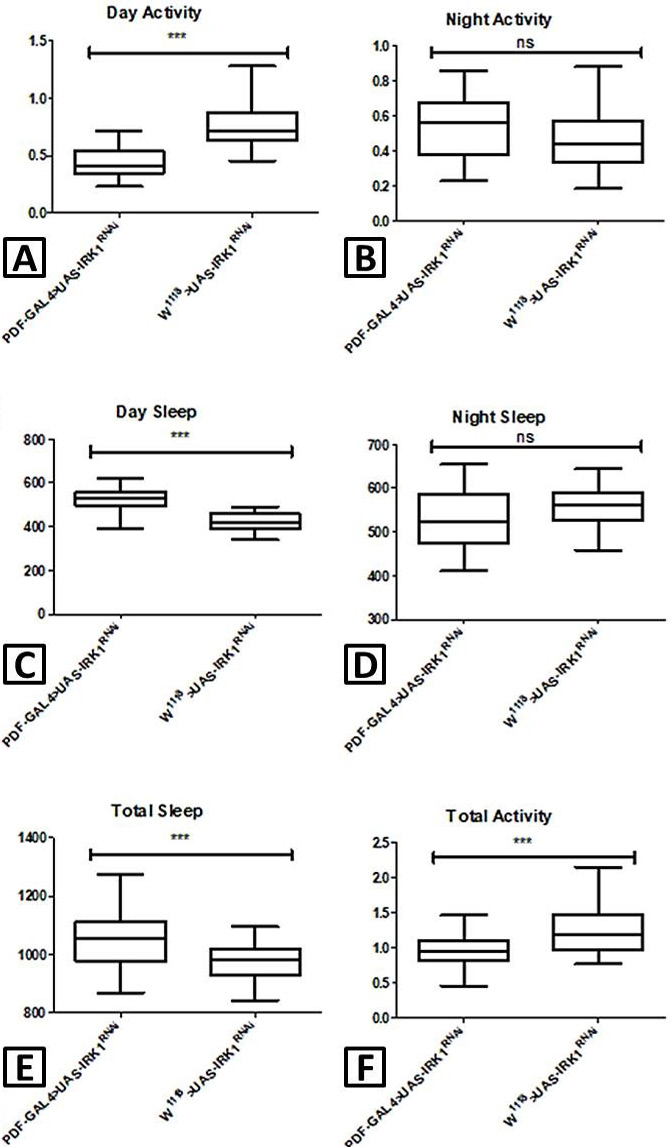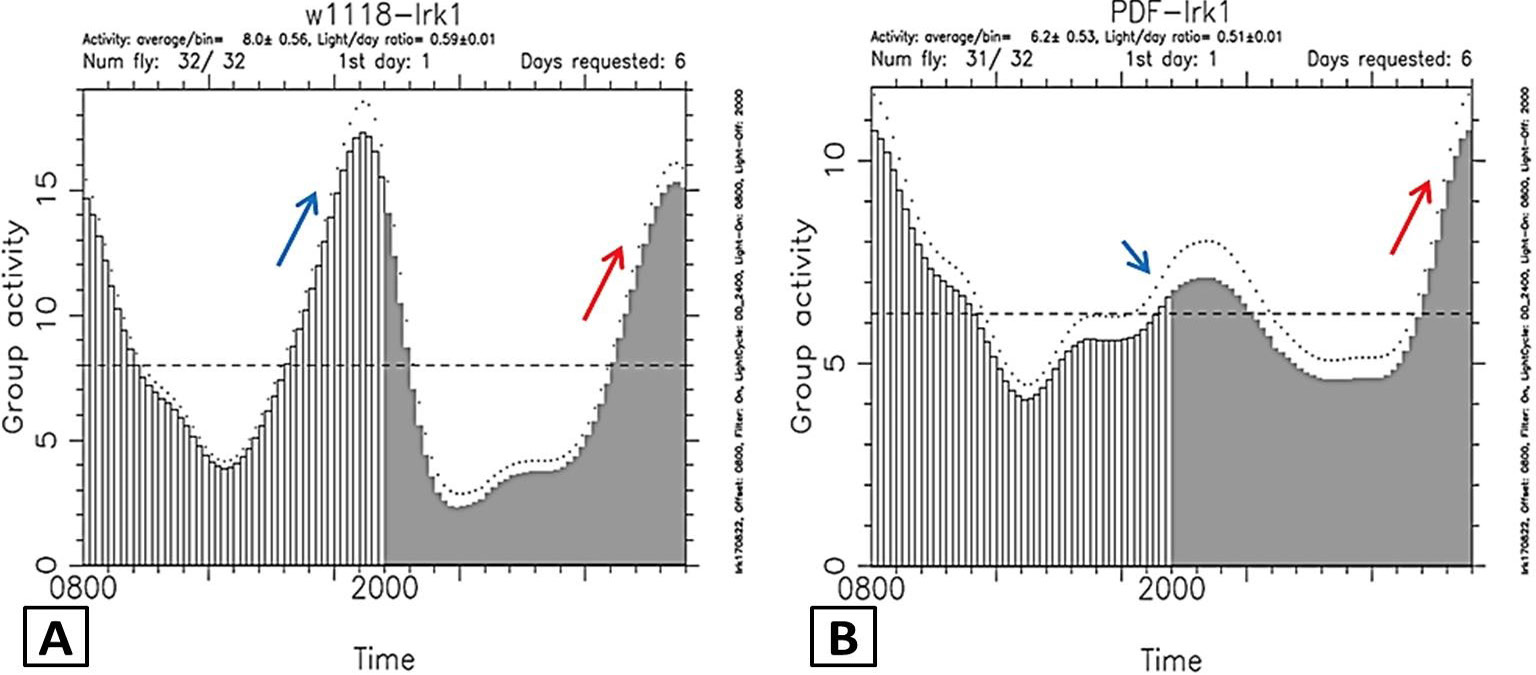Inwardly Rectifying Potassium Channels in Drosophila Regulate the Sleep/Wake Behaviour through PDF-Neurons
Inwardly Rectifying Potassium Channels in Drosophila Regulate the Sleep/Wake Behaviour through PDF-Neurons
Mehwish Akram1,2,* and Naeem Rashid1
PDF-expressing neurons show a different arborisation pattern in the absence of IRK1 channels. Male flies aged 5-7 days raised on normal food and12:12 LD cycle were beheaded at two different time points. The brains were dissected and stained with anti-PDF antibody (red). A and B, the control flies with sLNvs sending projections towards the dorsal part of the brain (indicated by the yellow arrow) both before and after the lights were turned on. C and D, the IRK1 knock down flies where axonal projections towards the dorsal neurons were absent. The yellow double arrow indicates the presence of PDF-Tri neurons, which are usually degenerated after few days of eclosion. ZT-22 h indicates two hours before the lights were turned on (ZT 0 h = 0800 h), ZT-02 h indicates two hours after the lights were turned on.
IKR1 knock downs show an increase in day sleep and decrease in activity. 5-7 days old flies raised on normal food and 12:12 LD cycle were put in DAMS and observed for consecutive 7 days under the same conditions with 40-60% humidity. The data was analysed for sleep and activity. A and C, significant decrease in day activity and increase in day sleep, respectively. B and D, no effect on night activity and sleep. E and F, the total change in activity and sleep over the period of 7 days. Error bars show standard error of the mean (P<0.0001).
Knocking down IRK1 causes dampening of evening anticipation peak. Male flies aged 5-7 days raised on normal food and 12:12 LD cycle were put in DAMS under DD: LL condition to observe the circadian rhythm. The flies were left for 24 hrs in DAMS to acclimatize to the environment. First three were continuous dark and last three days were continuously light exposed. The average group activities were plotted as eduction graphs using FaasX. On the x-axis time is plotted in hours and on the y-axis are the average group activities of flies in one channel. A, the control flies with normal evening and morning anticipation peaks as indicated by the blue and red arrows, respectively. B, the diminishing evening peak (blue arrow) and the normal morning peak (red arrow).












